In the figure shown neglecting friction and mass of pulley, what is the acceleration of mass B ?
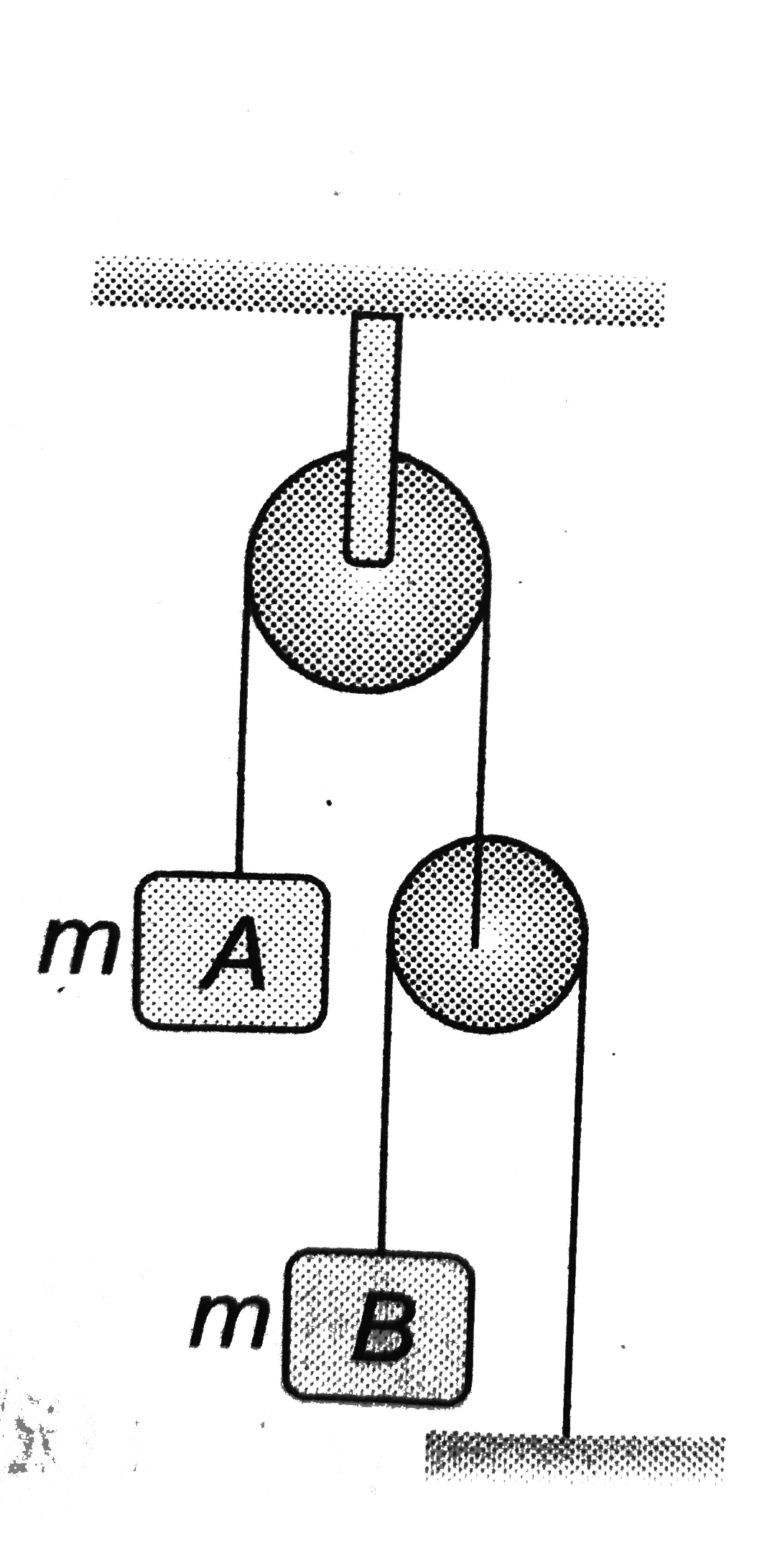
g3
5g2
2g2
2g5
The correct Answer is:D
For block A
mg−2T=ma
For block B
T−mg=mb
and by constraint motion
(a−b)+a=0
Solving (1),(2) and (3) get
a=−g5
and b=−2g5

Similar Questions
Knowledge Check
Study in fig. and answer the following questions accordingly. Neglect all friction and masses of the pulleys.

What is the acceleration of block B?A30/77ms−2B60/77ms−2C80/77ms−2D120/77ms−2Study in fig. and answer the following questions accordingly. Neglect all friction and masses of the pulleys.

What is the acceleration of Block A?A60/77ms−2B80/77ms−2C180/77ms−2D60/77ms−2The system shown in th fig is released from rest. (Neglecting friction and mass of the pulley, string and spring). The spring can be elongated:
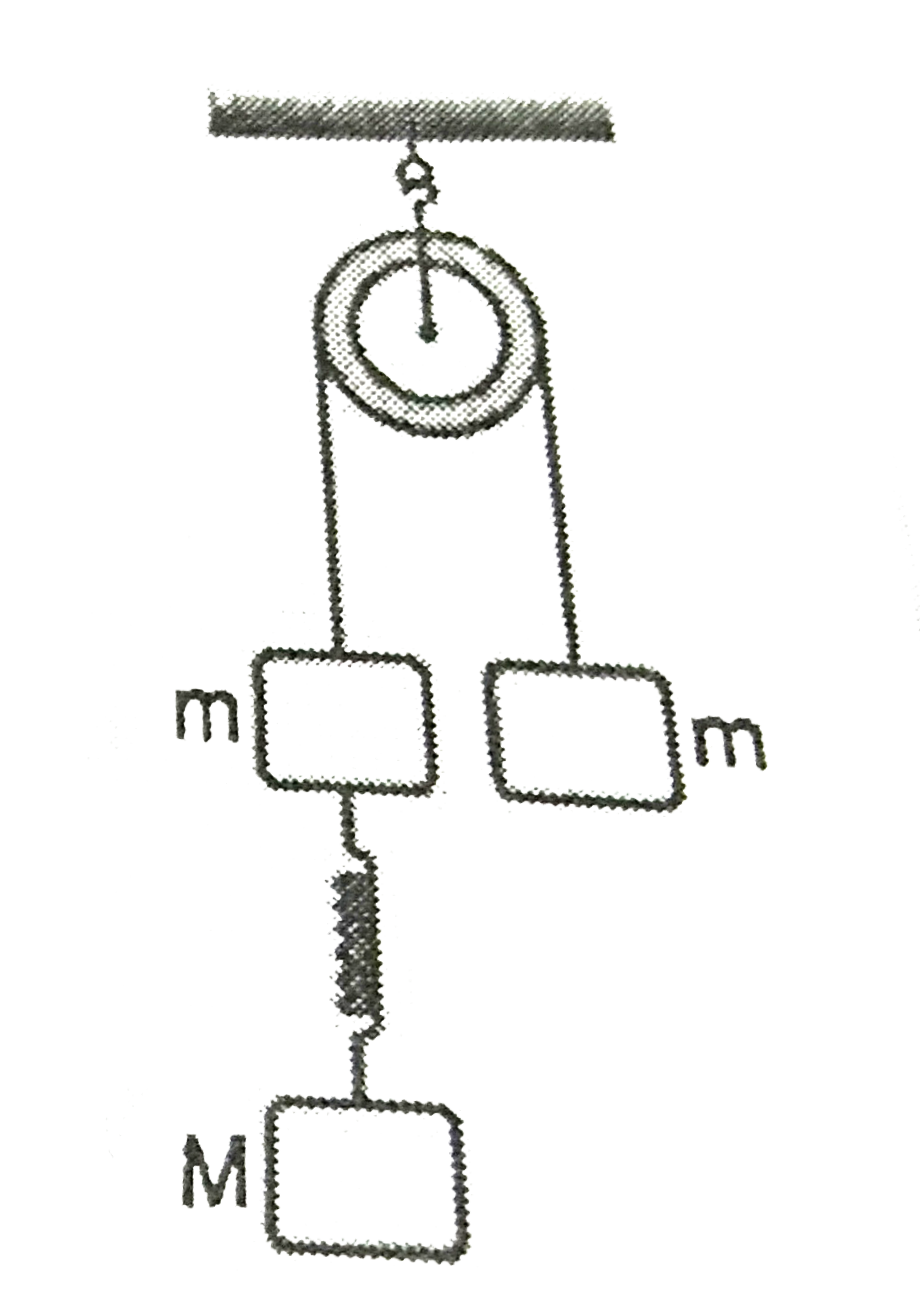 Aif M>mBif M>2mCif M>m2Dfor any value of M (M should be greater than zero)
Aif M>mBif M>2mCif M>m2Dfor any value of M (M should be greater than zero)
Figure shows a composite pulley of that consist of two cylinders of ‘R’ '2 R' stacked coaxially. Moment of inertia of composite pulley is MR24.A light string is wound over pulley and another pulley 'A' of mass 'M' is hanged through the string as shown in figure
If there were no friction between string and pulley ‘A’, then the acceleration of pulley ‘A’ will be -
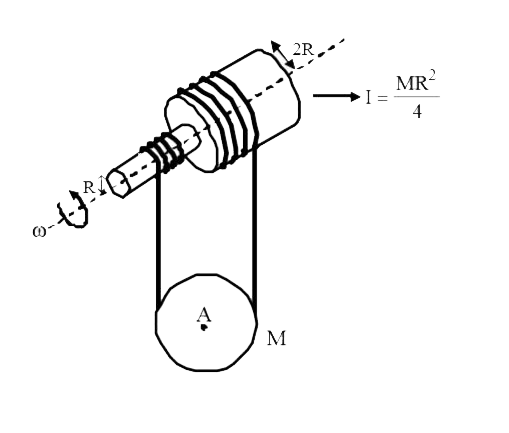
View SolutionTwo masses as shown are suspended from a massless pulley. Calculate the acceleration of the 10 kg mass when masses are left free
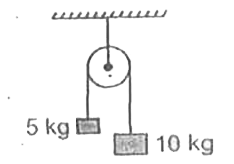
View SolutionStudy in fig. and answer the following questions accordingly. Neglect all friction and masses of the pulleys.

What is the tension in the string?
View SolutionA pulley is connected to the ceiling of an elevator by a massless rod. Two masses are connected as shown in figure. There is sufficient friction in the pulley axis. The acceleration of block w.r.t. earth is
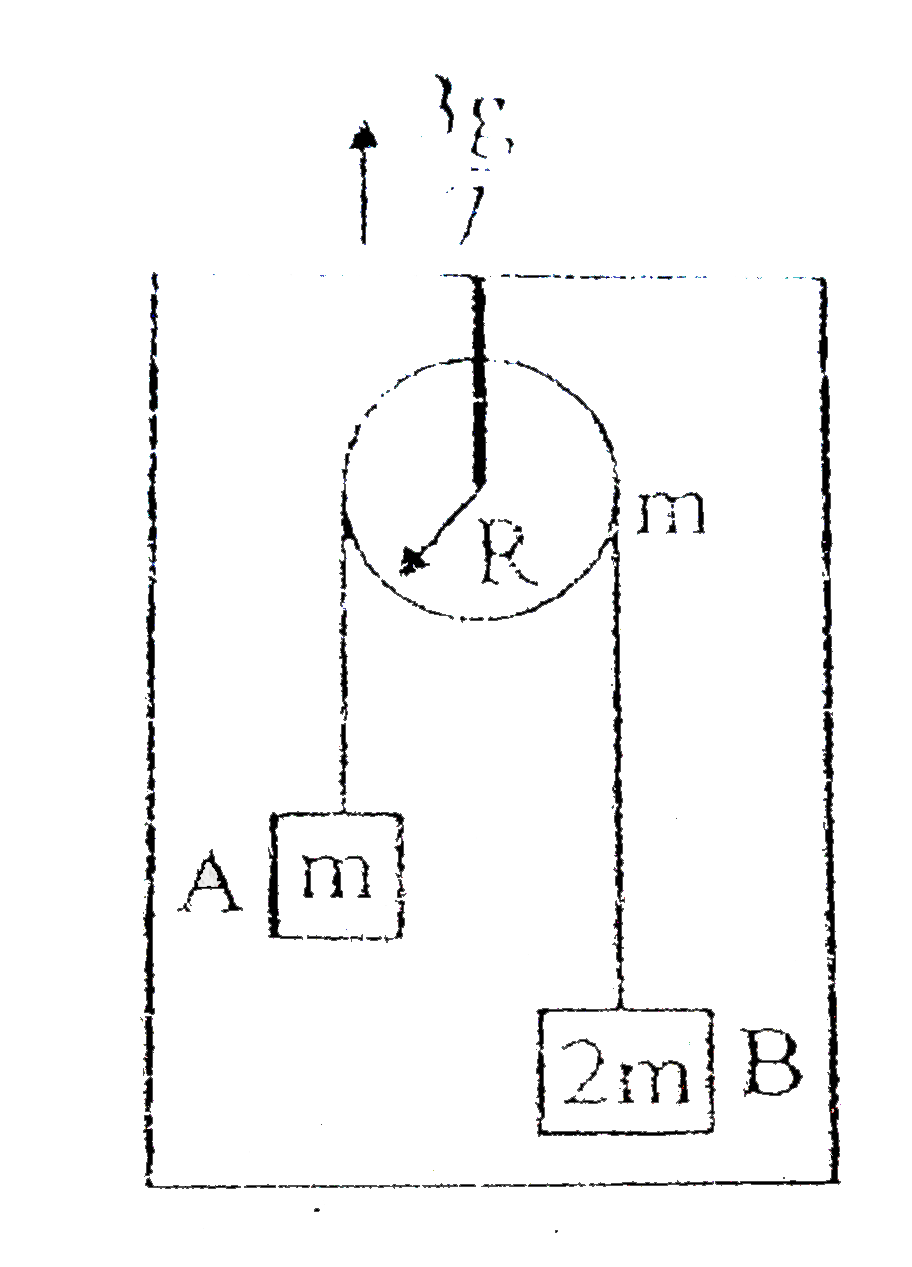
View SolutionTwo bodies A and B each of mass M are fixed together by a massless spring A force F acts on the mass B as shown in fig At the instant shown the mass A has acceleration a. What is the acceleration of mass B?

View Solution

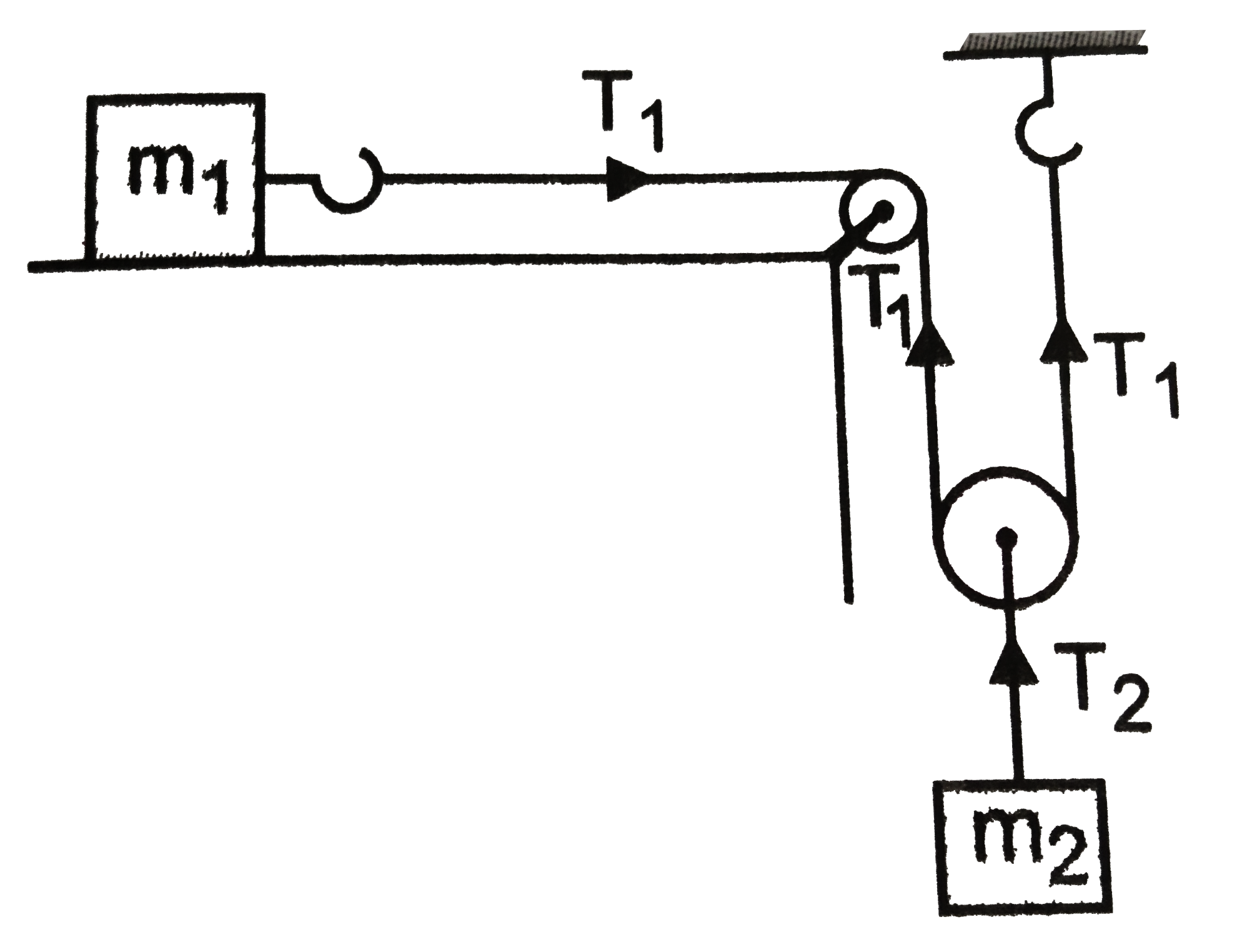 .
.